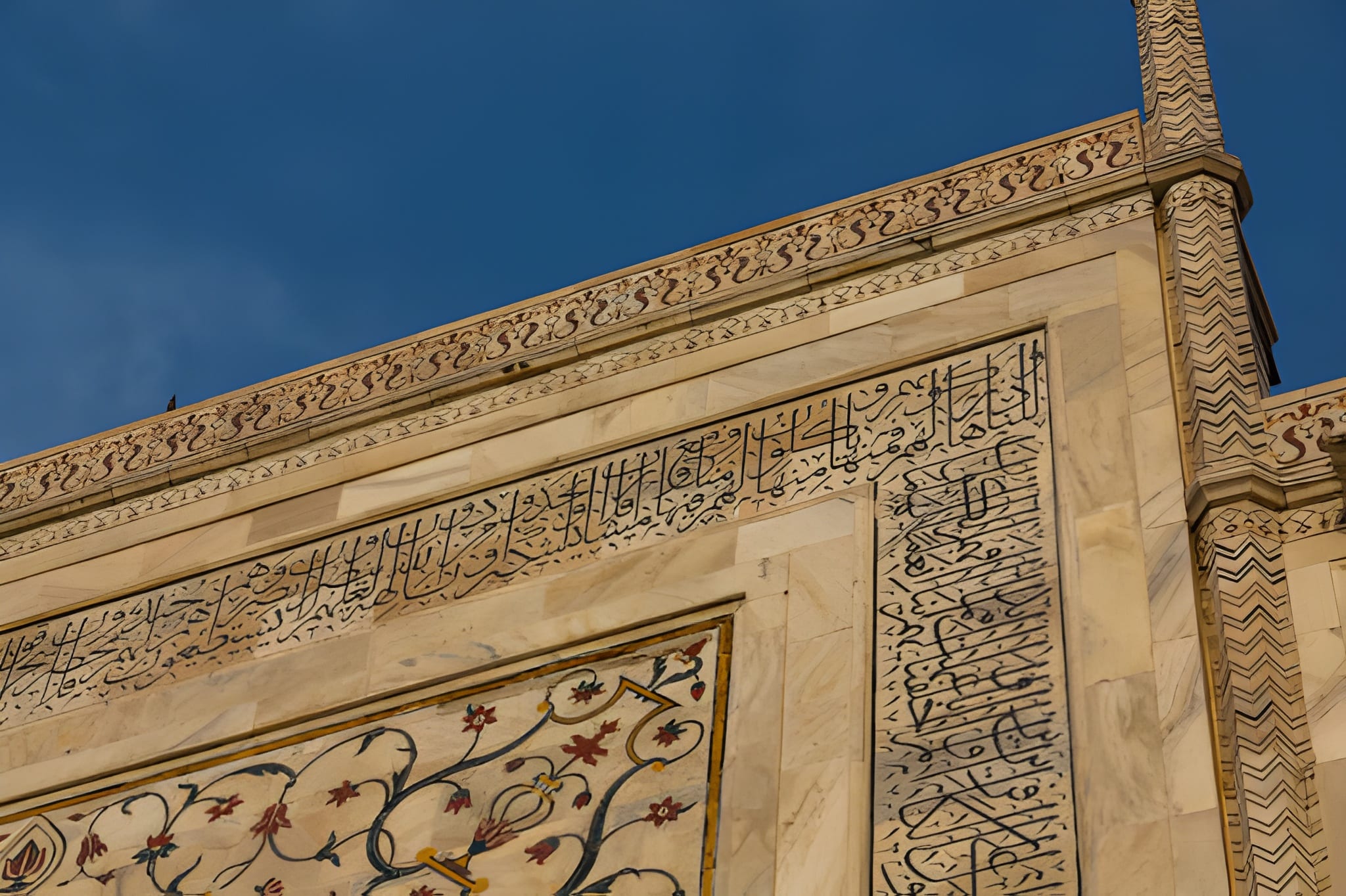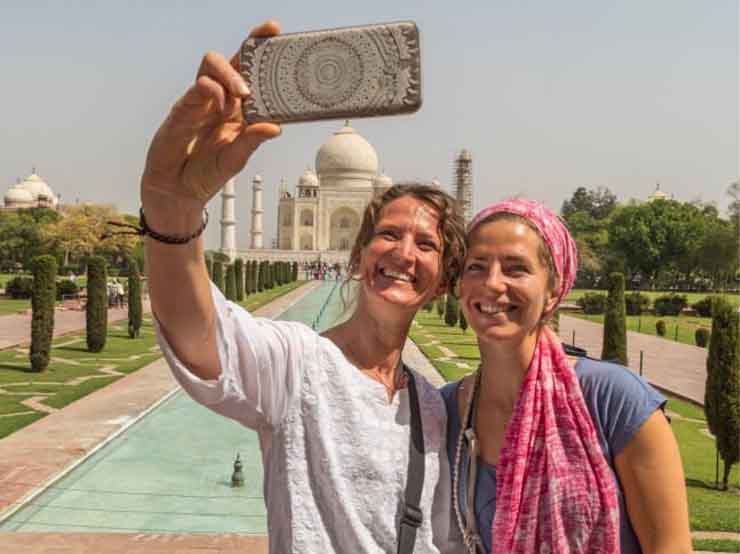The Taj Mahal, one of the most celebrated monuments in the world, blends architectural brilliance with artistic devotion. Every detail reflects the skill and vision of Mughal artisans, and the calligraphy on its gateways captures both beauty and meaning.
When visitors approach the grand entrance, they see gateway arches framed with Arabic calligraphy. These inscriptions draw from the Qur’an, echoing themes of paradise, eternity, and divine mercy. The words do more than decorate marble walls—they guide viewers toward reflection and awe.
Artisans carved much of the calligraphy in thuluth script, a graceful and intricate style admired across the Islamic world. They inlaid jasper or black marble into pure white marble panels, producing bold contrast and timeless elegance. Each letter flows with precision, showing the dedication of craftsmen who devoted years to their work.
The design also demonstrates a mastery of perspective. Higher panels feature slightly larger script so the writing appears uniform from below. This clever adjustment shows how Mughal architects combined art with mathematics to create harmony for every viewer.
The artistry continues beyond the gateways. Domes, minarets, and marble walls display inlay work made from precious and semi-precious stones. Geometric forms and floral motifs unite architecture, sculpture, and calligraphy into a single vision of love and devotion.
Standing before the Taj Mahal leaves visitors with more than admiration for its scale. The monument invites reflection on life, faith, and legacy. Whether you come for its architectural perfection, its spiritual resonance, or its breathtaking beauty, the Taj Mahal offers an experience unlike any other.
If you plan to see this wonder for yourself, book your tickets through Ticketstajmahal.com. The site makes planning simple and ensures that your journey to India’s most iconic monument begins with ease.










Comment (0)